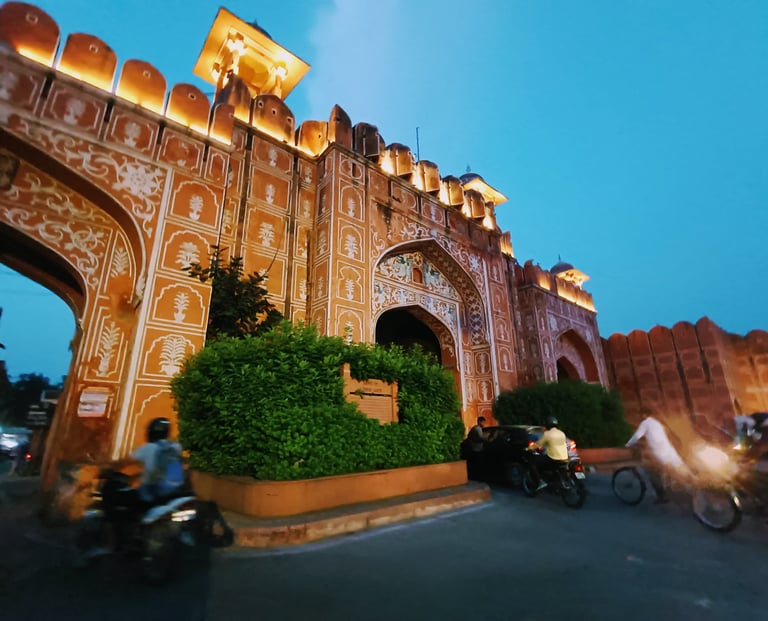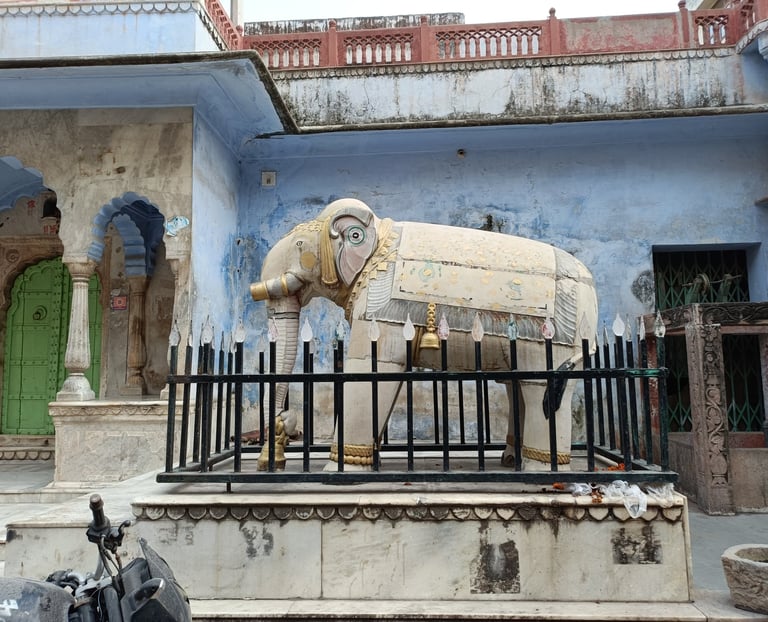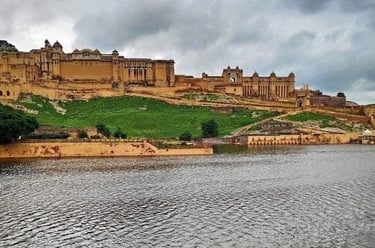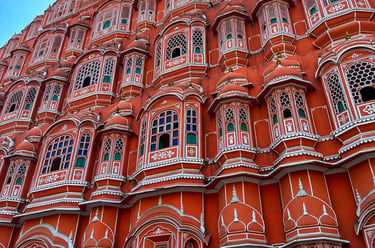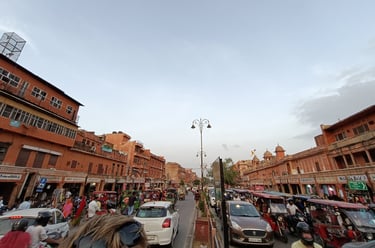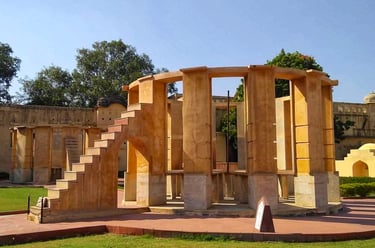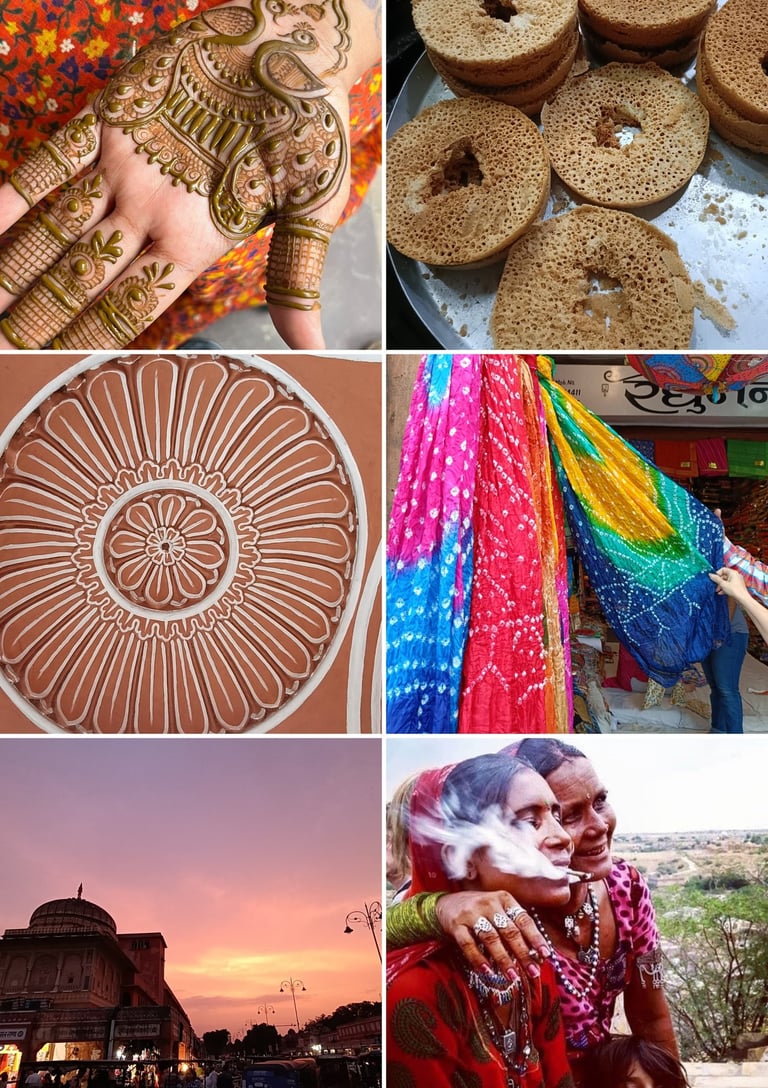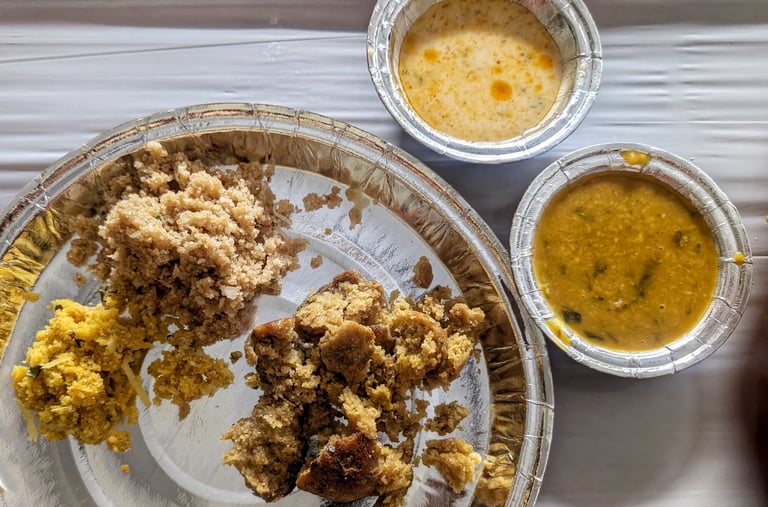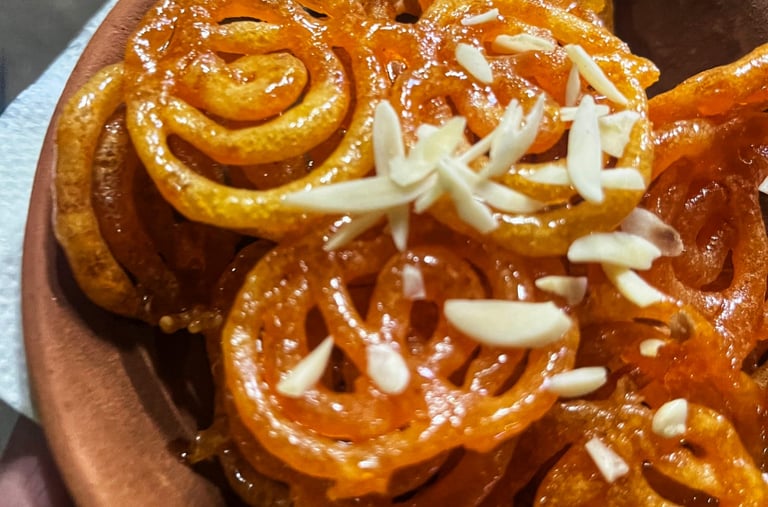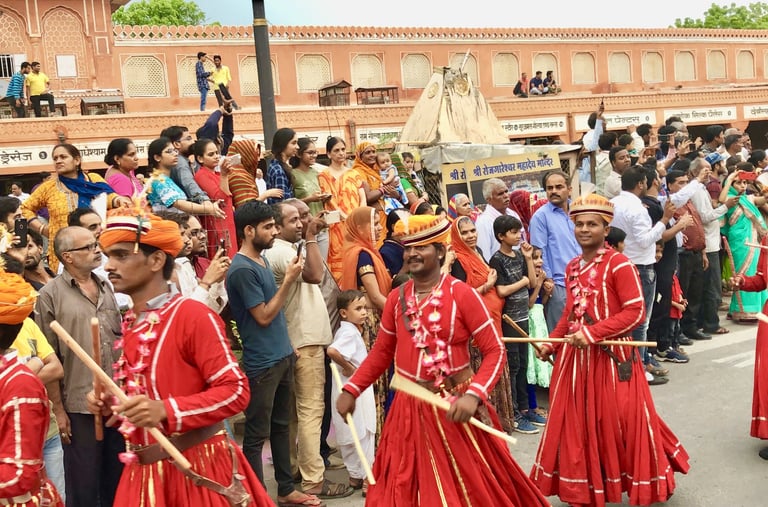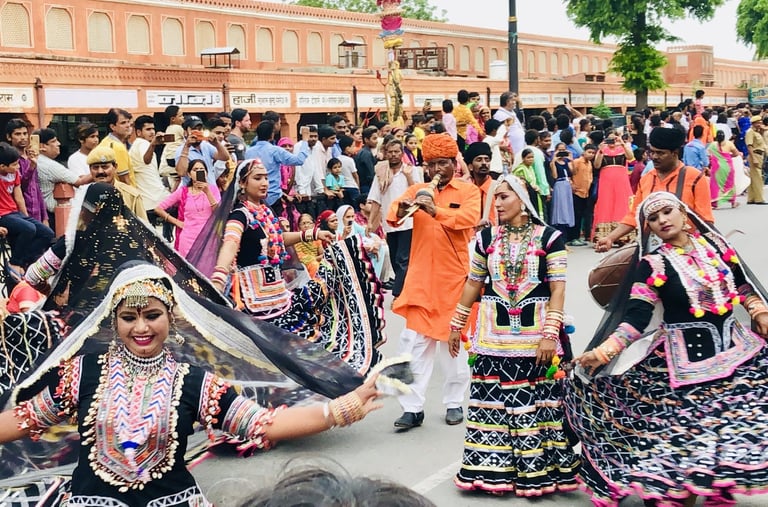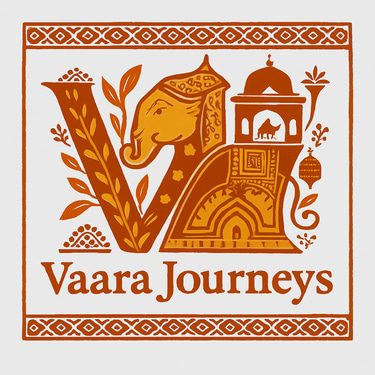Jaipur Journeys!
The Pink City of India
Jaipur – The Pink City of India
Founded in 1727 by Maharaja Sawai Jai Singh II, Jaipur is the capital of Rajasthan and part of India’s famed Golden Triangle. Known for its distinctive pink-hued architecture and planned city layout, Jaipur is home to UNESCO World Heritage Sites such as Amber Fort and Jantar Mantar. The city is celebrated for its royal palaces, vibrant bazaars, traditional crafts, and rich cultural heritage, making it a key destination for history, architecture, and cultural tourism.
Best Time to Visit Jaipur?
The ideal time to visit Jaipur is from October to March, when the weather is cool and pleasant for sightseeing and outdoor activities. Winter temperatures range between 8°C and 25°C, making it comfortable to explore forts, palaces, and markets. Summers (April–June) can be extremely hot, while the monsoon season (July–September) brings occasional showers and higher humidity.
How to Reach Jaipur?
Jaipur is well-connected by air, rail, and road. The Jaipur International Airport (JAI), located about 12 km from the city center, has regular flights from major Indian cities and select international destinations. The city’s main railway station, Jaipur Junction, is a key stop on India’s rail network, with trains linking it to Delhi, Mumbai, Kolkata, and other cities. Jaipur is also accessible via national highways, with regular bus and taxi services from Delhi, Agra, and other parts of Rajasthan.
What to See in Jaipur?
Jaipur offers a blend of royal heritage, architectural marvels, and vibrant local life. Key attractions include:
Amber Fort – Majestic hilltop fort with stunning courtyards and views.
City Palace – A mix of Mughal and Rajput architecture with museums.
Hawa Mahal – Iconic façade with 953 windows, built for royal ladies.
Jantar Mantar – UNESCO-listed astronomical observatory.
Nahargarh Fort & Jaigarh Fort – Offering panoramic views of the city.
Albert Hall Museum – Showcasing Rajasthani art and artifacts.
Local Bazaars – Johari Bazaar, Bapu Bazaar, and Tripolia Bazaar.
What to Do in Jaipur
Jaipur offers immersive experiences that go beyond sightseeing:
Heritage & Cultural Walks – Explore the old city lanes, havelis, and hidden architectural gems.
Art & Craft Trails – Meet local artisans and witness block printing, blue pottery, and gemstone cutting.
Bazaar Walks – Discover vibrant markets like Johari Bazaar and Bapu Bazaar for jewelry, textiles, and spices.
Food Tours – Taste Rajasthani delicacies such as kachori, ghewar, and dal baati churma at local eateries.
Photography Tours – Capture Jaipur’s palaces, pink-hued streets, and bustling bazaars.
Festivals & Cultural Shows – Experience events like Teej, Gangaur, or folk dance performances.
Sunset Points – Enjoy evening views from Nahargarh Fort or Jal Mahal.
What to Eat in Jaipur?
Jaipur is a paradise for lovers of rich, flavorful Rajasthani cuisine. Must-try dishes include:
Dal Baati Churma – A traditional Rajasthani platter of baked wheat balls, lentils, and sweetened crushed wheat.
Gatte ki Sabzi – Gram flour dumplings cooked in spiced yogurt curry.
Laal Maas – Fiery red mutton curry, a favorite among meat lovers.
Pyaaz Kachori – Flaky pastry stuffed with spiced onions, best enjoyed with chutney.
Mirchi Vada – Stuffed and fried green chilies, a popular street snack.
Ghewar – A festive sweet made of flour, ghee, and sugar syrup.
Kulfi Falooda – Creamy frozen dessert served with sweet vermicelli.
Street food lovers can can opt for a Food walk in local market for authentic flavors.
Major Festivals & Events in Jaipur
Jaipur Literature Festival (January) – World’s largest free literary festival, featuring authors, poets, and thinkers from across the globe.
Makar Sankranti / Kite Festival (January) – The sky fills with colorful kites, with rooftop celebrations and traditional sweets.
Gangaur Festival (March/April) – Dedicated to Goddess Gauri, featuring vibrant processions of women in traditional attire.
Teej Festival (July/August) – A monsoon festival celebrating the union of Goddess Parvati and Lord Shiva, marked by processions and folk performances.
Diwali (October/November) – The city glows with illuminated palaces, markets, and homes during the festival of lights.
Holi (March) – The festival of colors, celebrated with music, dance, and traditional sweets.
